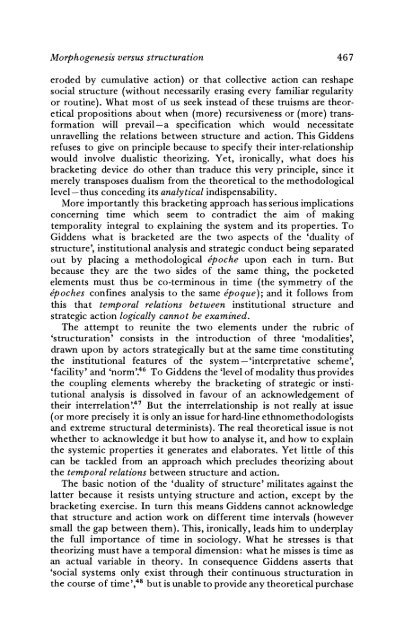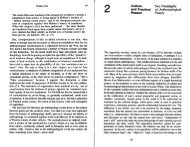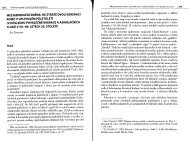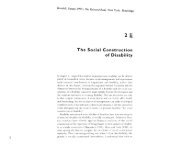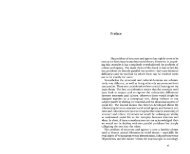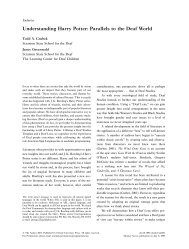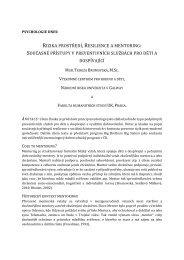Morphogenesis versus Structuration: On Combining ... - Moodle
Morphogenesis versus Structuration: On Combining ... - Moodle
Morphogenesis versus Structuration: On Combining ... - Moodle
Create successful ePaper yourself
Turn your PDF publications into a flip-book with our unique Google optimized e-Paper software.
<strong>Morphogenesis</strong> <strong>versus</strong> structuration 467<br />
eroded by cumulative action) or that collective action can reshape<br />
social structure (without necessarily erasing every familiar regularity<br />
or routine). What most of us seek instead of these truisms are theoretical<br />
propositions about when (more) recursiveness or (more) transformation<br />
will prevail-a specification which would necessitate<br />
unravelling the relations between structure and action. This Giddens<br />
refuses to give on principle because to specify their inter-relationship<br />
would involve dualistic theorizing. Yet, ironically, what does his<br />
bracketing device do other than traduce this very principle, since it<br />
merely transposes dualism from the theoretical to the methodological<br />
level-thus conceding its analytical indispensability.<br />
More importantly this bracketing approach has serious implications<br />
concerning time which seem to contradict the aim of making<br />
temporality integral to explaining the system and its properties. To<br />
Giddens what is bracketed are the two aspects of the 'duality of<br />
structure', institutional analysis and strategic conduct being separated<br />
out by placing a methodological epoche upon each in turn. But<br />
because they are the two sides of the same thing, the pocketed<br />
elements must thus be co-terminous in time (the symmetry of the<br />
epoc/zes confines analysis to the same epoque); and it follows from<br />
this that temporal relations between institutional structure and<br />
strategic action logically cannot be examined.<br />
The attempt to reunite the two elements under the rubric of<br />
'structuration' consists in the introduction of three 'modalities',<br />
drawn upon by actors strategically but at the same time constituting<br />
the institutional features of the system-'interpretative scheme',<br />
'facility' and 'norm'.46 To Giddens the 'level of modality thus provides<br />
the coupling elements whereby the bracketing of strategic or institutional<br />
analysis is dissolved in favour of an acknowledgement of<br />
their interrelation'.47 But the interrelationship is not really at issue<br />
(or more precisely it is only an issue for hard-linethnomethodologists<br />
and extreme structural determinists). The real theoretical issue is not<br />
whether to acknowledge it but how to analyse it, and how to explain<br />
the systemic properties it generates and elaborates. Yet little of this<br />
can be tackled from an approach which precludes theorizing about<br />
the temporal relations between structure and action.<br />
The basic notion of the 'duality of structure' militates against the<br />
latter because it resists untying structure and action, except by the<br />
bracketing exercise. In turn this means Giddens cannot acknowledge<br />
that structure and action work on different time intervals (however<br />
small the gap between them). This, ironically, leads him to underplay<br />
the full importance of time in sociology. What he stresses is that<br />
theorizing must have a temporal dimension: what he misses is time as<br />
an actual variable in theory. In consequence Giddens asserts that<br />
'social systems only exist through their continuous structuration in<br />
the course of time ,48 but is unable to provide any theoretical purchase


